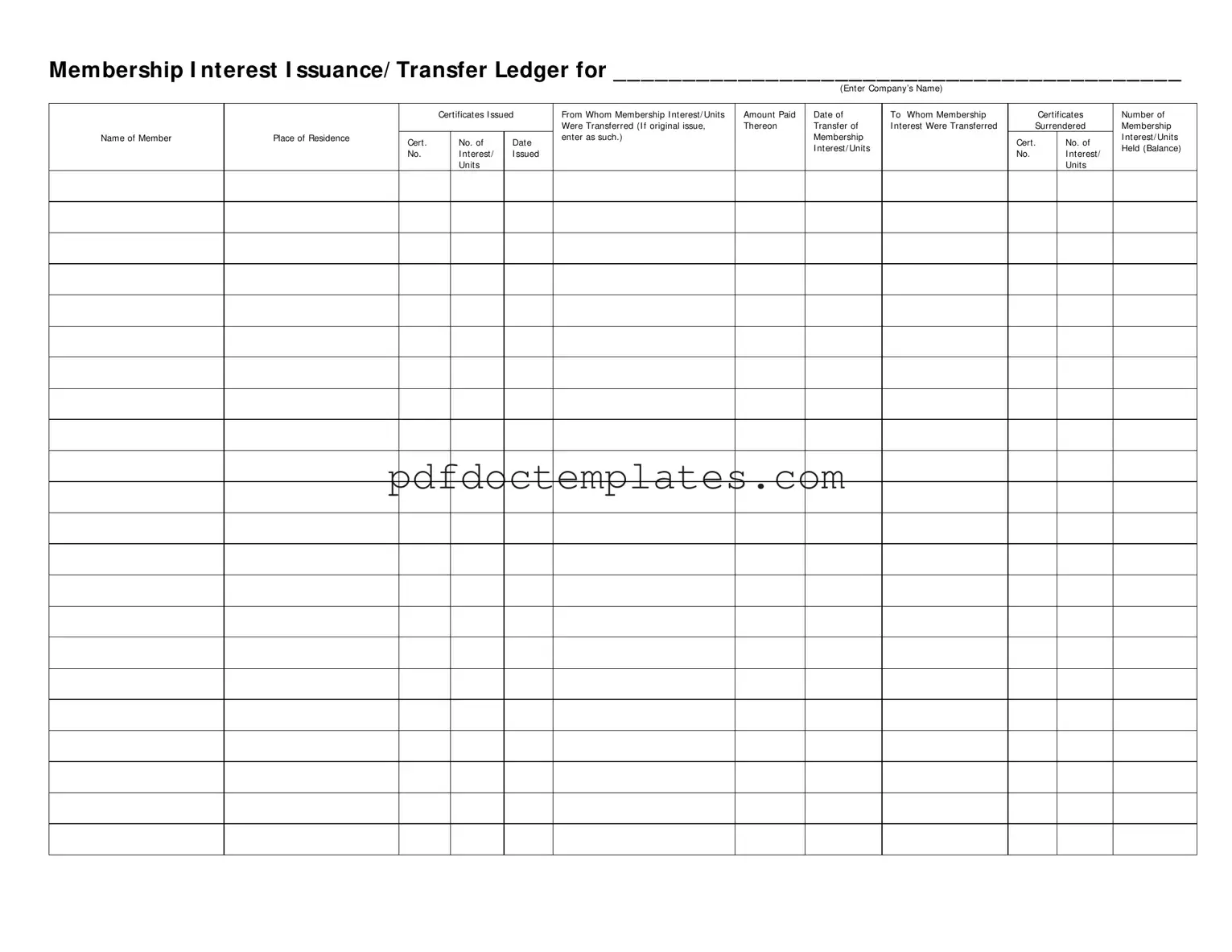Download Membership Ledger Template
The Membership Ledger form serves as a crucial document for tracking the issuance and transfer of membership interests within a company. This form records essential details such as the names of members, the amounts paid, and the dates of transfers, ensuring transparency and accuracy in membership transactions. To facilitate proper record-keeping, it is important to complete this form accurately; please fill it out by clicking the button below.
Access Your Document

